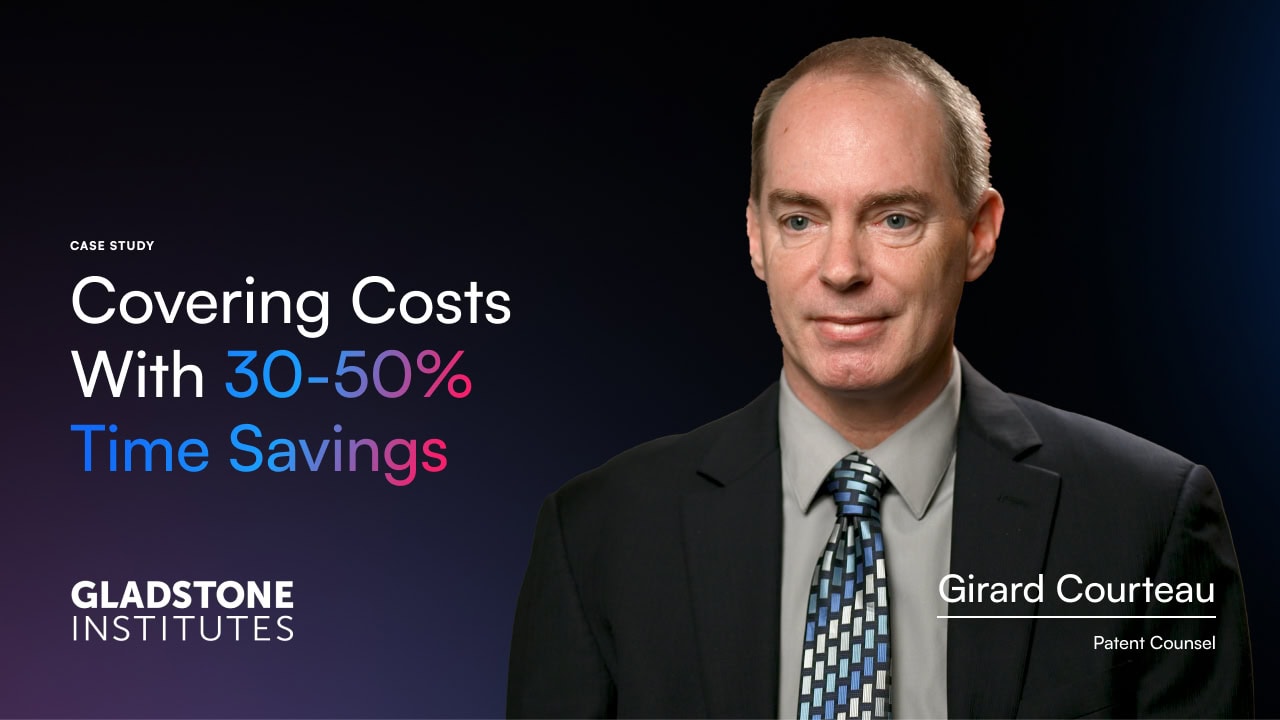From tech transfer customer to Tradespace colleague: Meet our new Founding AE for universities
July 31, 2025 | 5 min readTradespace’s newest team member John Sherrill joins us from BioVentures, University of Arkansas for Medical Sciences’ tech transfer office. As a former customer turned Founding Account Executive, he joined Tradespace to, in his words, put it in “as many hands as possible.”
Beyond John’s ability to give voice to the tech transfer experience, I knew we had to have him on the team for his tinkerer’s spirit. John is a true gift to the innovation community, as many of you already know and the rest of you are about to find out in this Q&A.
Alec: Recognizing you’re only two weeks into the job, how has it been?
John: Going in, I knew this was going to be really different than what I’ve done before. But the team, even though it’s small, really likes to work together. Instead of being intimidated, I feel like I can ask questions. It’s been a nice change of pace, working at a private company where I can get what I need very quickly with not a whole lot of hoops to jump through.
Alec: I’m glad to hear it, even if you might be sugarcoating things for your boss. Did you ever think you’d find yourself working at an AI startup with your background?
John: It’s interesting, I did my PhD in spine biomechanics and then a postdoc in Health Sciences Innovation and Entrepreneurship. That’s where I first came across IP, inventions, patents, and all that type of stuff, including startups. Since then, I’ve been interested in startups and have worked with a couple. So would I have said, Oh, yeah, I’m going to end up at an IP tech startup? Absolutely not. But the startup part, yes, there were clues.
Alec: Tell us more about going into Health Sciences Innovation and Entrepreneurship. Have you always been interested in translating science?
John: Yes. Even though my PhD was pretty translational, I remember going to my PI very early on in my time in that lab and saying, “It’s great that we’re working to understand what and why. But how do we fix it? Can we work on fixing the problem, not just understanding it?” So I’ve always had the preference for producing something that solves the problem once and for all instead of continuing to treat it.
I talk about this view of impact with inventors and researchers all the time. A lot of them are concerned with the impact factor of the journal they publish in. But if you want true impact, it’s not about getting your ideas into the best journal, but into a product that impacts people’s lives. That goes far beyond the impact of an article.
Alec: Where do you think this way of thinking, focusing on implementation, comes from?
John: Both my dad and my stepdad were always tinkering with stuff around the house. When I was a kid, I’d help out with projects and fixing things. So it’s always been that I’d rather work smarter than harder. How do we fix it when there’s a problem, and what’s the best way? How can we do this better, easier, more efficiently?
Alec: What kind of projects?
John: I used to have a dog that I’d taught to ring a service bell to go outside. Eventually, her paws got so big that the little button would go between her toes, so she’d have to smack it a few times before it would ding. So I was like, ok, there’s clearly a better way to do this, but what is it? I ended up taking the light out of a tap light and replacing the button with that. Now she had a big flat thing she could hit.
Alec: That’s so cool. How did this then turn into a career as a scientist?
John: I loved math and science as a kid. One day in fifth grade we were doing a lab and my teacher came over to me and said, “You should really be a scientist,” and that was that. I originally went to medical school for a couple of years, but left when my dad passed away. I decided then that instead of treating patients, I wanted to solve problems at a bigger level and did a Master of Public Health instead. With that I had every plan of working at a functional MRI lab doing brain imaging research, when a new researcher doing spine biomechanics came to campus. And I was just fascinated with that. So I ended up joining that lab and doing a PhD there.
Alec: And then your time in tech transfer?
During my postdoc I took a two-semester class called New Venture Development about how you form a company and prepare yourself for venture capital. A big part of that was also, how do you protect your technology, your IP, with patents and copyrights and trademarks and trade secrets and all of those things?
Meanwhile, I was doing my spine biomechanics work in the Department of Orthopedics and I had a 3D printer in my office. So the surgeons would all come by wanting to print their ideas. And they’d want to patent them. Which is not how it works, as I’d learned from my coursework. That’s how I learned that most scientists don’t understand patents.
One day I was talking to the person running the tech transfer office, which had been undergoing some major changes because the prior president had passed away. And I was complaining to him about how there aren’t enough resources or information for inventors and researchers on campus. So he said, “Well, do you want to come help fix it?” And I was like, “Well yeah, I do.”
Alec: I know you only felt comfortable leaving the BioVentures office because you feel like you did help fix it. Tell us about that?
John: Yes, I feel good about how organized and efficient we’ve made the office in the last three years — taking it from paper, excel, and the project management software Monday.com to a more tooled place — first with previous solutions and now Tradespace, which has been such a game changer.
I never used to meet with inventors unless they requested it. But with Tradespace, all of a sudden I had the time to set up appointments with them for every disclosure, as soon as they submitted one. That’s how much time it freed up. And when I went into those meetings, it appeared to our inventors that I’d done a ton of work, when really Tradespace had done all the work to make me better informed.
Alec: What do you think will happen to tech transfer as it reaps the benefits of generative AI?
John: Even though commercialization is the goal of tech transfer, it’s difficult for many offices to achieve. A lot of them are smaller and struggle because they’re underfunded, undermanned, and are just trying to keep their heads above water.
The pathway to market for many of BioVentures’ technologies is 10 to 15 years — none of the inventions I worked on to market during my time there. So we’re very conservative about keeping patents alive, which costs us. But before you even have a patent, you have to do so much. Evaluations and summaries for example, take a significant amount of time and effort if the invention isn’t in your field. Which nothing is, because my field was spine biomechanics. Then, there’s finding partners. Someone in our office came from the pharma industry, and we used his contacts. But when we couldn’t, it would be a tremendous task to try to find the right person at the right company to speak with.
All this is to say, I’m excited to close the gaps in people, time, expertise, and access to information different tech transfer offices experience — so all of them can get inventions out the door as fast as possible on a broad scale.
Alec: We are so grateful and happy to have you on the team, John. Thanks for sharing with us about your journey from leaving med school to earning your PhD, entering tech transfer and now IP technology.
If you liked this interview, follow John on LinkedIn for more to come.



